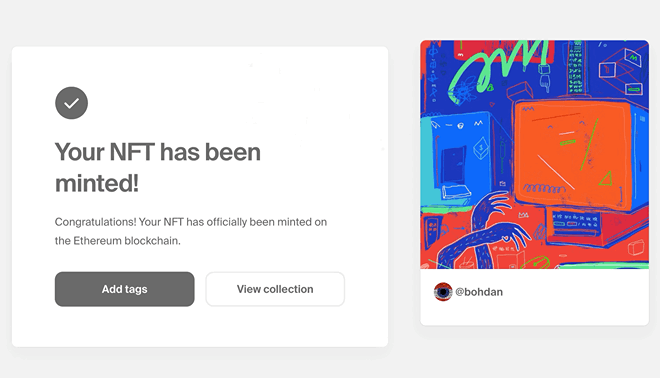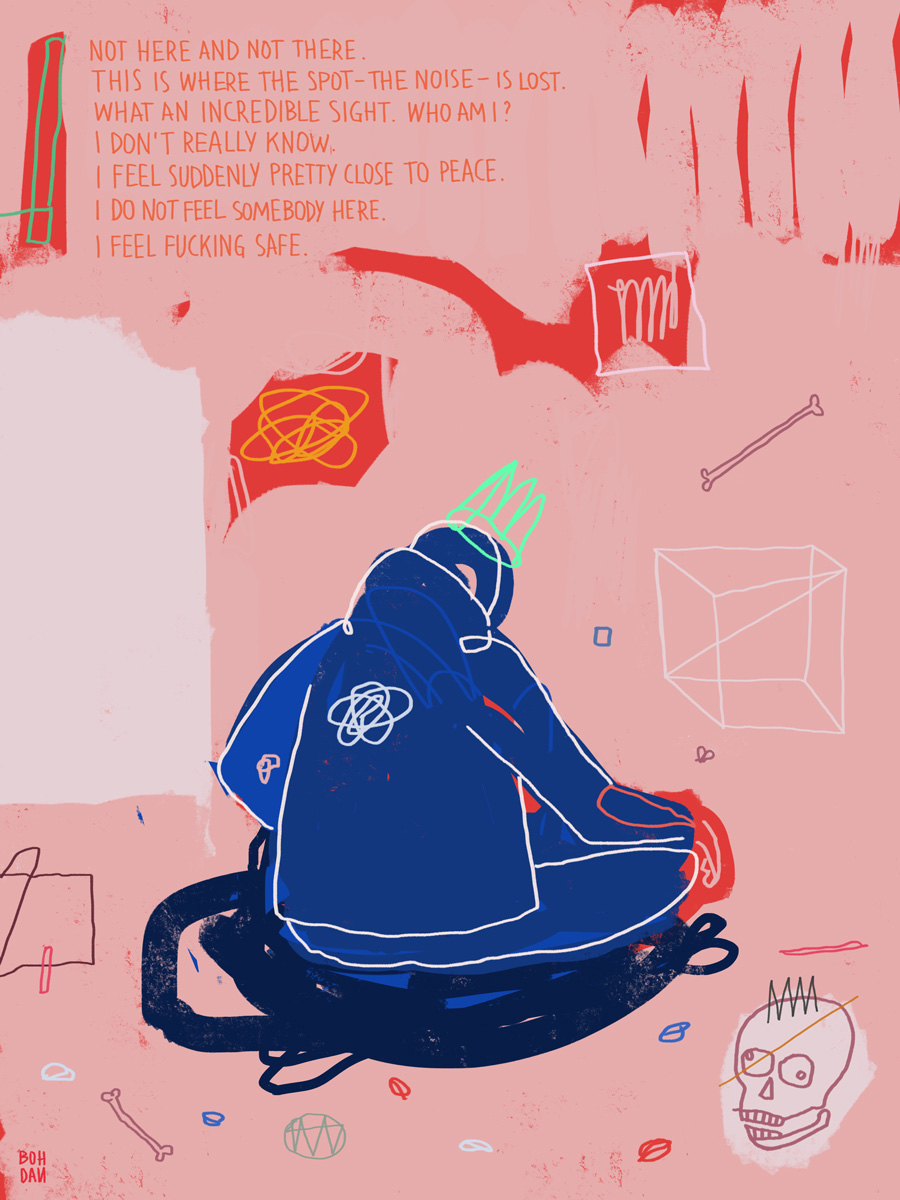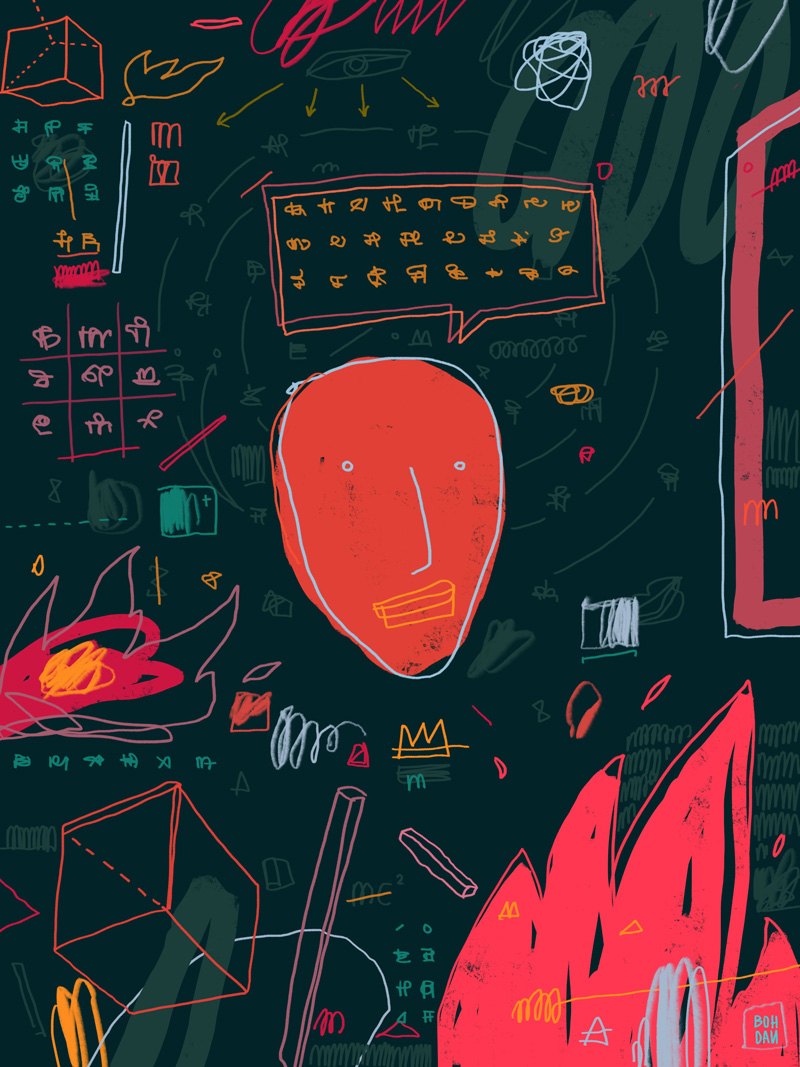DEEP DREAMED TALES
AI-generated poems and human-made drawings
‘Deep Dreamed Tales’ explore the intersection between human creativity and artificial intelligence. This series delves into the early state of Natural Language Processing algorithms, charting the unexplored territories where human imagination meets machine intelligence. This project embraces the raw and the bizarre, finding beauty in the unexpected and the unconventional. The project serves as a historical snapshot, capturing a unique moment in the evolution of our civilization and the development of AI.
The series begins with a single phrase “Thin Layer of Time”, serving as the seed for an AI to generate a poem. Despite its initial strangeness, the AI’s output sparks a cascade of images and emotions, as if dredging up visions from the depths of the subconscious. These visions are then translated into digital drawings, creating a visual echo of the AI’s poetic voice.
The project unfolds in two distinct seasons, each marked by its own unique style and quality. A technical break between the seasons provided the opportunity for both the AI’s text generation and the artist’s drawings to evolve. The second season saw the introduction of a more advanced algorithm and a shift towards more detailed drawings. Elements from previous works found their way into these new creations, resulting in a fusion of past and present that nonetheless presented an entirely fresh aesthetic.
The story of ‘Deep Dreamed Tales’ is wrapped up in a digital art book that tells about this research project. It raises thought-provoking questions about the interaction between humans and artificial intelligence, and the possible future it will bring us. It’s a testament to the transformative power of collaboration between human and machine, pushing the boundaries of traditional art and inviting viewers to delve into the depths of the subconscious.

Season I
The first sentence that popped into my head was “Thin Layer of Time”. Just a few minutes later, the computer gave me back a short poem. It was odd and a bit clumsy, but there was something really interesting about it. The strange words made me feel things and got my imagination going. I started to draw everything that came to mind as I read. It was like the images were coming straight from a deep part of my mind. All I had to do was turn them into pictures.
Season I was created in 2021 and consisted of 8 artworks.
Season II
A technical break between the seasons provided the opportunity for both the AI’s text generation and the artist’s drawings to evolve. The second season saw the introduction of a more advanced algorithm and a shift towards more detailed drawings. Elements from previous works found their way into these new creations, resulting in a fusion of past and present that nonetheless presented an entirely fresh aesthetic.
Season II was created in 2021-2022 and consisted of 12 artworks.
NFTs
Both series of this project were published as NFT collections.
The first series was released in 2021 on MakersPlace with the artwork ‘Thin Layer of Time’. It was the first chapter of the project, and collectors met it with great interest due to the unusual combination of generative poems and lively, powerful drawings. In 2022, the second series of the project appeared at Foundation. It received a significant update – both, the poems and the author’s style became more detailed.
Season I – MakersPlace.com Season II – Foundation.app

The Book
The ‘Deep Dreamed Tales’ project culminates with a digital art book.
This book stands as a testament to the blend of human creativity and AI, narrating the project’s intriguing journey. It pushes artistic boundaries and invites readers into a thought-provoking exploration of the future shaped by human-AI collaboration.
Written in two languages – English and Ukrainian – this book is a wonderful combination of strange poems generated by artificial intelligence and the author’s drawings. It invites the reader to an adventure through the uncharted territories of the artist’s subconscious. It is also a testament to the capabilities of large linguistic models at the time of the book’s creation. This makes it not only aesthetically pleasing entertainment but also, to some extent, a book about the history of technological progress.






















